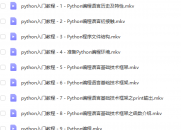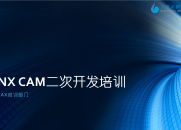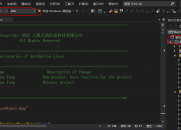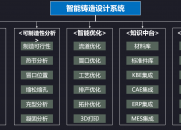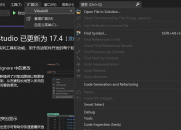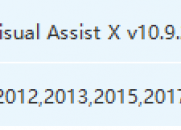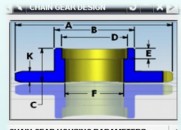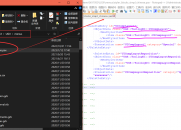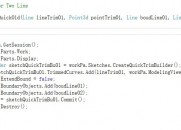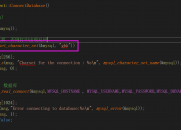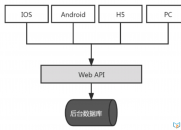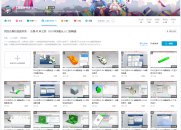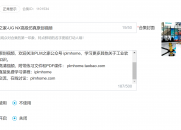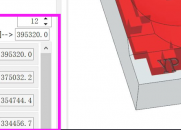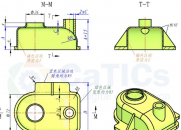|
|
请使用QQ关联注册PLM之家,学习更多关于内容,更多精彩原创视频供你学习!
您需要 登录 才可以下载或查看,没有账号?注册

x
http://www-cad.fnal.gov/PLMWorld2008/Teamcenter%20Unified/The%2520Network%2520is%2520Slow!.pdf
$ ?! V+ j5 x2 ehttp://www.plmworld.org/p/bl/et/blogid=43&blogaid=218 , S9 ? O! Q$ E7 e7 W8 d4 x3 o- @
https://support.industrysoftware.automation.siemens.com/docs/teamcenter/Network_Performance_Tuning_V6.6.pdf
% V3 {2 {1 \8 l% \, n/ K6 i( T" ?9 l I$ e- l
Teamcenter is Slow! Teamcenter Performance Bottlenecks & Mitigation
0 x" |) z7 y+ Z6 Y1 }( o * t1 H* {1 }. V5 w4 o
Larry Carpenter
0 E8 x9 S" W" QAt the Chicago-Wisconsin RUG Fall Conference in October 2012, I gave a presentation on common Teamcenter performance issues and solutions along with listing, in one place, many other past Teamcenter performance presentations and white papers. It was very well received by a standing room crowd, so I thought I'd share it with the rest of the PLM World community. Here is a link to the presentation (you must be a TCUA SIG member to view it): http://www.plmworld.org/p/do/sd/sid=3758&type=08 h0 l6 k$ ?- n: F- `: u8 l/ W
For those unwilling to join the TcUA SIG to view it, I wrote an abbreviated version here:
( X5 O7 n$ _$ e2 C" O" gWhy Performance Matters
9 l8 ?) d2 [2 q6 l" [+ s2 e• Productivity – doing more work with less ]* d& G* i1 p: q; b# D: a0 s
o Improve end user productivity
* `# a6 q3 O5 Y( w: [o Improves administrator productivity
: g- k) t7 W% D( e! ?; w7 H" t fewer help desk calls responding to or fixing preventable problems
* ]2 O# ?5 D1 E+ D• Reliability# _' S5 k [6 Z7 O0 s7 i
o A well tuned Teamcenter environment also improves system stability and uptime.0 K! Q5 h0 I. z v# Z; D
o Less opportunity for data corruption" P/ O `5 B- A7 I3 D) z$ ~
o Fewer operational errors/problems$ G( k+ B7 O2 ^6 F' U! r
• Cost Savings1 {# J+ a1 C* i: f5 J/ G
o Less waiting means less time wasted.
& ^ p* Y$ ?, p0 I$ [Quick Case Study: Company ‘S’
2 L# s6 x: u: qPerformance was so bad that something which used to take 10 minutes was taking 2 hours to do.Did pretty much everything wrong, performance-wise, at first but ultimately fixed every major problem. What took 2 hours now only takes 2 minutes.! V I. ^, g w0 V' ]6 w
See my March 2012 article on PLM World’s website for details:0 R9 Q1 v- E% T/ S: u
Teamcenter Performance – Hard-Earned Lessons: http://www.plmworld.org/p/bl/ar/blogaid=1526 ^2 i5 m e0 Q+ E$ {4 H1 J
Common Performance Bottleneck Causes
/ r7 `. y* ]2 _/ |. k' zUsing OOTB settings — OOTB settings are intended for development environments; not production environments.
. m; t1 W" B2 U5 y2 ~, }. c/ [Overloaded servers — Putting too much on a single server.
U* s8 s# A+ |( c) R- \) EOperating system settings — Network settings most common (e.g. TCP parameters).
/ X" Q9 @8 X2 s3 [: C$ i+ g2 dLack of performance monitoring & tuning — Performance doesn’t improve all by itself. It requires human intervention to determine root cause and address it.# N5 p6 e( c+ S1 l/ J8 K% s
Databases – The Most Likely Culprit
: A$ k/ _: Y+ f1 T• Database performance is highly sensitive to hardware, software, and DB configuration.
- |+ Z( G _4 S- Q! J• DBAs at companies generally don’t do performance monitoring and tuning of your Teamcenter DB.
0 w" ^- H6 s6 X3 j* F+ i8 w• It’s typically the last place that Teamcenter administrators look for performance issues rather than the first.! N6 v0 p5 f/ q5 N
Mitigating Database Server Bottlenecks" S+ {1 E3 Q( f* x$ j
• Must use dedicated DB server9 U* U ?( C& j" G4 ]
o Do not use your DB server for anything other than your Teamcenter production database. This includes not serving additional databases from the same server.0 h" P5 W7 V8 z9 h# d. |
• Must have fast dedicated storage for DB files
3 G1 j% G s8 @% n7 ro Avoid using a NAS device; especially a shared NAS. Use DAS (Direct Attached Storage) instead.+ a- \; F+ J9 t4 p( K
o Use multiple fast disk spindles partitioned with proper RAID levels according to the DB vendor & SPLM recommendations.5 k5 X0 q2 k; T
o Split DB data, temp, and log files across those RAID partitions according to DB vendor & SPLM recommendations.8 L ]! C( g0 M; T( y5 c; e) F
o Use disk controllers with a battery/flash backed cache.
/ Q; ]: q6 q/ p" \o Use multiple disk controllers if possible.# o0 k, `. {; W# g2 b( t& r, |
• Cram the RAM
' I' b1 f* Y9 L0 Q- ?1 I9 X; a4 h' ~o Ideally should be greater than the database size or in-memory footprint. Otherwise disk swapping/paging will occur.) v$ F; m' n* [* `; Z- D
• Use 64-bit OS & DB software
. E, w4 j" b7 k3 Y/ e" I) h7 k$ Bo 32-bit software has severe limitations regardless of whether you use “/3G”, AWE, or PAE settings to access memory beyond 3-4G. It’s still a bottleneck.1 t! D2 R, ~- L
• Use a good quality network adapter(s)1 l0 A1 Y6 {* L4 ]6 c- q. h
o Often overlooked as potential source of bottleneck (e.g. packets/sec limitations). Consider multiple NICs “trunked” for better throughput.
- U; C6 c/ Y+ @0 o' W, S• DB maintenance tasks3 X& x5 B) G% [/ K1 u
o Update statistics and rebuild indexes regularly.( |( r6 L; f- W' o
Common Teamcenter Server Bottleneck Causes
* B+ @6 r3 ?# C" J ^7 Z2 A( I- ~: B• Overloaded Tc Servers
, R6 Q, O8 f' z! H# O• Poor Web Tier Configuration
# b4 ? ]* y' G1 ?# e% ^" v• Poor FMS Configuration5 b- ~# E5 z4 b& u( N- ?, S
• Debugging Turned ON& R1 l+ d9 F. _
• Rich Client using OOTB settings: e8 T/ g: t0 ~& L$ U% z( z
‘Unload’ Overloaded Teamcenter Servers
f: v3 }& o: W; } V• Put Dispatcher modules on separate computers away from other Tc Servers.
( H) H6 P T8 S; x1 _4 z; A' |: d! w# H• Separate the Web & Enterprise tiers from the Tc Corporate and Volume servers.
! G2 _1 Q# d) d8 U& b2 S* y• Use load balancing for Middle Tier & FMS:
5 x7 q, Z5 c Y6 r( a ]7 Po Use multiple Web/Enterprise Tier servers to open up potential hardware resource bottlenecks (e.g. CPU, RAM, network adapter I/O, disk I/O, MB bus, etc.).
( f% ~/ Q7 f9 N, Y4 do Set up multiple FSC cache servers to take load off busy volume servers/storage.
. _1 h Z1 T& u3 x/ L$ O# J F/ E0 q( [Web Tier Configuration, g2 s7 r/ p' |& r. a& e# B+ T9 ]
• Do not use port 80 or 8080
' Q0 C* Y8 B2 S1 [o HTTP traffic on those ports is considered web browsing traffic and is therefore given lowest priority on any network. Can also cause randomly dropped connections.0 A3 d& t o% K* E# X! w W5 K- h
• Enable http compression if not using WAN acceleration" Y+ T; e0 e+ s! j% L
o Must be done on both web server and on clients to take effect.
) s5 {# ?* B, h& M& ?• Change/tune OOTB settings for Web Server/App
1 {+ M# h1 e# go E.g. timeout values, max # of threads, Java memory, etc.
" |/ `: I+ u% Bo Read tuning guides specific to your chosen web server/app4 {0 K% _6 k& y! m
• Scale it up or sideways
5 q7 U9 {8 N2 v2 G- D1 s) }( bo Add another web tier server, or increase # of work processes (e.g. Web Garden mode for IIS).6 Y; K( n6 L2 z% |
Common FMS Bottleneck Causes
0 }% Q. J/ E3 @9 e+ t5 S• Data improperly routed
7 ^; U5 B; \7 L' Y4 z9 Bo E.g. Forcing data to go through a remote FSC server over a WAN and back again over the same WAN instead of simply pulling it directly from a nearby Volume/cache server.$ c5 \% V3 i& T% Q' l
• Using OOTB settings
2 Q2 P1 ]+ D _! o( Bo For development purposes only, remember?$ q6 N4 r7 ]- m5 d5 a
• Missing client IP address subnets. p- P1 k* d* O# \4 y" u4 d' d
• No load balancing
! Z. y" Z9 F% S) [6 ]: W) b3 D& m( L• Not using remote cache servers for WAN users
/ N# ]9 X9 g( t6 N9 b) r• Not using remote volume servers for WAN users+ g( V) I( b1 u0 w7 ]
FMS Configuration6 x; U8 F# c8 K4 S8 B' P. O
• Ensure routing is correct0 O% x2 \8 F# O/ h$ r% `
o Between multiple FSC groups via entry/exit/link parameters2 P( F2 l4 o1 d1 k( ^
o Between clients and their assigned FSC servers by using complete and accurate ‘clientmap’ parameters for ALL clients.8 ?0 L2 b4 h. O# W$ N o- N7 u$ ]
o Use correct transport algorithms for LAN and WAN users.. w% J8 H; B+ n. b
• Tune FSC/FCC cache settings+ S( z) k* I; W) l8 b
o Simply picking a total read/write cache size is not enough.
& w, g! J. C: M' F6 q8 So Read “Sizing the FMS fast cache” in the Teamcenter help documentation. There is also a FMS cache sizing tool available from the GTAC web site. Link to FMS Calculator( {6 @4 c) N' m! e' D7 U
• Ensure correct client maps
1 I, C9 H" @/ ro Determine ALL potential client IP address ranges and where they are located. Don’t forget to account for VPN IP addresses.
: q, O% E9 t: C' ?8 Qo Place client maps in the closest FSC group to their location., i7 Y, S! d: t9 E$ J2 v/ k2 d3 H L
• Use multiple FSCs for load balancing
2 W2 ]5 }% Z& {6 S) v9 \4 co Use “front-end” FSC cache servers to reduce load on Volume servers. (Requires disabling of FSC direct routing), u3 w1 [* h0 U3 L2 u
o Use redundant FSC cache servers to load balance each other. Also provides fail-over.
6 m6 E/ P( _2 X• Place FSC cache servers close to users
5 V% i- y" ^! i I5 R8 To Greatly improves read performance (load time) over a WAN for groups consuming shared data.
" y) v% F0 `1 l' J. _• Place Volume servers close to users
1 m, f3 {1 n; T/ o5 |- Do Use Store & Forward or at least place remote volumes near remote users. (Backups of remote volumes are critical)" ]. O' K& a7 _ t; j
o Greatly improve write performance (save time) over a WAN especially for CAD data. g6 f2 I! [: D0 G1 I; I- h1 ~7 ^
• Prepopulate FSC caches
5 N A0 b$ s! @, So Run a nightly script to prepopulate shared data across FSC caches.' I5 @5 |: l% T6 w6 h ^+ r4 w( v
Misc Teamcenter Changes; s" _& j; P+ {9 Q# G' ~+ B0 A
• Disable logging and other debugging tools. Turn them on only when needed. Examples,( b9 }4 ?! s* F8 e0 c4 P% O
o TC_SECURITY_LOGGING=OFF! p1 K7 ~* d& A. |! k1 S
o TC_APPLICATION_LOGGING=OFF
5 N Q9 ~6 W: _, q K6 q+ do TC_SLOW_SQL=-1
5 K+ a4 A7 r# I" E$ R: w2 j5 C' b• Rich Client ‘Teamcenter.ini’ configuration:1 V* n2 z1 I7 ~& F+ s
o Modify Teamcenter.ini file to increase Java Memory and other settings. Will improve performance/stability when perform large operations (CAD, PSE expansion, large Workflows).
+ o" T- v+ p' D4 B4 }6 K• Enable FCC File Warming# P5 f0 D# n0 ~/ n% i5 v
o Improve startup time by having FCC and Tc files pre-loaded at OS login. e* R/ z4 J2 u( g6 R
Network Performance9 A4 J' k* o2 h" {% }2 O
• Use a hardware-based WAN accelerator if using Teamcenter between multiple facilities over a WAN.
4 [! I5 [ o) t3 x& B( R" e7 b: fo If none then make best use of software-based Web server and FMS WAN acceleration settings. (i.e. http compression & FMS compression)
" \" O% X' W. P. z& Y* _6 J• Optimize OS network settings
f8 d. b, E- E% Ho OOTB settings are insufficient
, x) c* r9 C1 Xo Applies to both servers and clients& K- G/ k1 t! p
o Examples, increasing # of tcp ports, disabling NAGLE algorithm, increasing buffer sizes, trunking multiple NICs, enabling Compound TCP, Large Windows Scaling
. s( \1 H' J9 u. IRecommended Server Changes (Windows)
' K3 k% [6 Y2 |% h: q. F+ c' _See Presentation.* @; V, _3 w7 [/ j
Recommended Client Changes (Windows)
! d, L2 W: ~- RSee Presentation.- [% [3 V5 f# T$ `, t
Performance Monitoring Tools
8 k6 s; k' _) P) }& F- f; ~- `• Some useful performance monitoring tools:
6 ?" j. u7 X# c% t• Performance Monitor (comes with Windows)
: V D, D9 c# t. t* `) x• Used to monitor OS, Teamcenter, and SQL use of resources
* E& s$ C, ?9 G5 _! P• Wireshark (freeware network packet sniffer)6 ~% M1 Z D& g, U
• Used to help identify network TCP performance between computers.
& Z) l( u! {6 @: a• Available at http://www.wireshark.org/! o! Y% V: h8 {* ~/ w
• Sysinternals Suite (free from Microsoft web site)' P/ M1 c+ E1 o
• http://technet.microsoft.com/en-us/sysinternals/bb842062 n7 d- \: y- {0 D
Reference Materials) C E( [ ? ?: x2 P
• Available on GTAC Web Site @ http://support.industrysoftware.automation.siemens.com/docs/teamcenter/) A# |- U2 P1 g
o Teamcenter Deployment Guide6 ?/ W5 B( j6 c7 Q
o Teamcenter Network Performance Tuning
7 m- @. S* W3 K0 R9 H9 Co JBoss 4.2.2 Installation & Tuning Guide- x/ b+ A9 S; z5 R% h; e: k
o Optimizing Teamcenter Client Performance* V: ?+ ^5 z8 D' Y8 O$ r9 g
o Teamcenter System Performance Analysis8 e1 G, }1 {% _; l2 f+ y5 Q
• Oracle documentation & web sites8 k3 e5 x2 M7 D3 ^* D
• MS SQL Server documentation in addition to:) I9 a U1 R( a
o Best Practices for Running Siemens Teamcenter on SQL Server8 v! L q, A Y
http://download.microsoft.com/download/7/3/6/7365D2BB-BB34-4D28-A128-F2C8FBA6E995/Siemens-Teamcenter-and-SQL-Server-Best-Practices.pdf
- T* X% V' b; \: O# Z% Io Siemens Blog on Technet
9 h2 n0 Z9 C1 J1 { http://blogs.technet.com/b/sql_server_isv/archive/tags/siemens/
. A" v5 [( g/ j2 ^' Zo Siemens-Teamcenter-SQL-Resource-Page% H2 [, C- ~7 d C2 v
http://blogs.technet.com/b/sql_server_isv/p/siemens-teamcenter-sql-server-resource-page.aspx
( i1 E( ]( ?$ b0 O( \6 r" M. T: a• Past PLM World Conference Presentations available at www.plmworld.org,# K2 E% z8 b6 f6 y; |0 n
o Teamcenter 4-Tier Deployment – Best Practices% Y. F* Z; I8 T9 M4 z8 q9 H* v
o Teamcenter – Database Performance. ?$ ]% c4 N$ t6 G2 h
o JBoss Optimization for Teamcenter- R N- a5 H+ l
o Optimizing Teamcenter Client Performance+ g8 n) `' E9 o+ f" j3 k+ X9 N0 Y) ^
o Teamcenter Database Server Configuration & Tuning
, S- J% G3 @1 P2 A2 bContact Information( R$ Y+ ]/ Y2 _5 B. c1 B
Larry Carpenter P.E., PLM World Teamcenter SIG Chair, tcua@plmworld.org3 W0 g+ p( V. E: z
Teamcenter UA SIG: http://www.plmworld.org/TC_UA' z6 B( E& q; Z8 ^
LinkedIn: http://www.linkedin.com/pub/larry-carpenter-pe/44/5b8/aaa, n7 D, ^$ L) ~, G1 ?3 Z1 ~
Alternate Contact Info: ideas2nx@plmworld.org, larry.carpenter@siemens.com) }5 s+ Q2 q0 M1 V" e$ C) _2 [" F
6 t. t1 m5 t/ o* z% H2 k; u; ^7 V |
|
